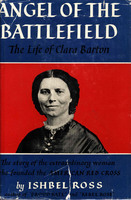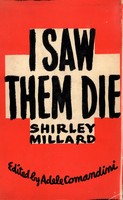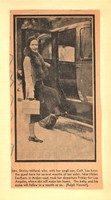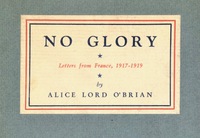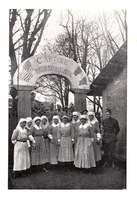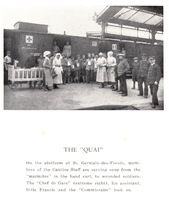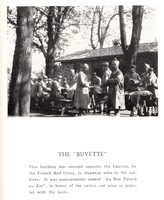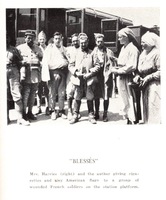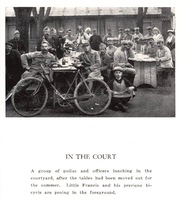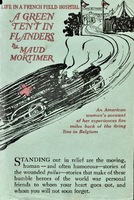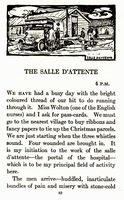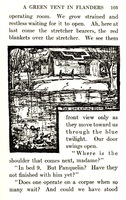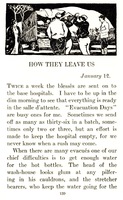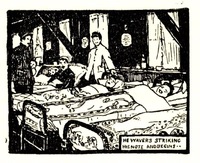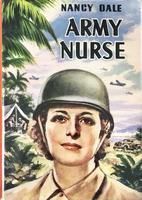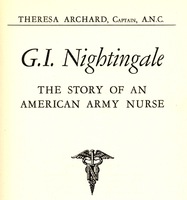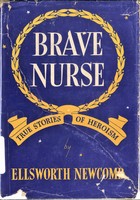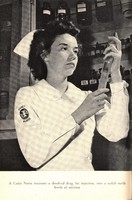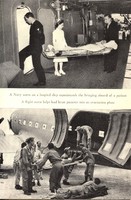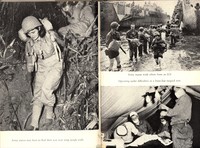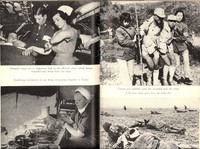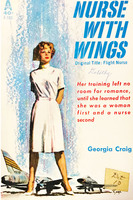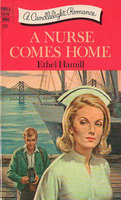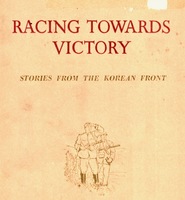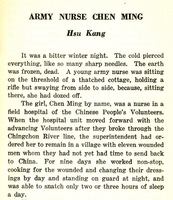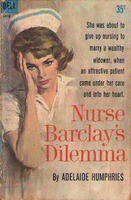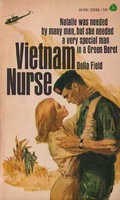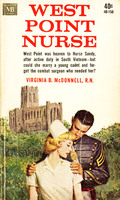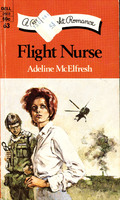Military Nursing: Angels and Martyrs
Images of the nurse as an angel of mercy and brave martyr flourished during times of war. They orginated as early as the Crimean War and American Civil War but became particularly prevalent during World War I.
Men were soothed with images of the angelic nurse—nurturing, feminine, clean, and pure—a stark and welcome contrast to the realities of war. But there were also images of the nurse that emphasized her stoic competence. During World War II, while other romance novels featured cover illustrations of young couples reunited after the war as a sign of hope, nurse romance novel covers depicted the heroine standing alone as if to convey her strength, courage, and necessary role in the war effort.
During times of war, a woman who was a nurse could gain recognition for more than her domestic capabilities. Plus, nursing was depicted as a selfless (even Divine) calling, which allowed nurses to sidestep some of the social pressure on women to marry young and set aside their career aspirations.
Be sure to click each image to open up a lightbox gallery with more information!
World War I
The nurse as martyr image emerged strongly in the aftermath of World War I. Biographies of the British nurse Edith Cavell, who was tried and executed for treason in Germany for helping soldiers escape from occupied Belgium, were popular and inspired numerous film adaptations and the publication of numerous other memoirs by nurses. Take a look several examples of memoirs from that era by clicking the image to the left!
World War II
The nurse martyr and angel imagery re-emerged during World War II. The US Office of War Information worked with writers to develop fiction stories meant to mobilize citizens (and especially women) into service. Unlike workers in other homefront industries, nurses were often deployed and publications didn't shy away from depicting nurses in the physcially and mentally challenging situations they faced. Military nursing brought women to the front lines where saving lives meant operating under their own authority and performing work usually reserved for doctors back home. When the war ended, nursing was one of the only industries to retain their female workforce, but many nurses found it difficult to transition back to the rigid and gendered hospital hierarchies.
The Korean War
Accounts from POWs following the Korean War brought to light issues of psychological warfare, leading to changes in how US military personnel were trained to withstand torture and exposure to propoganda. Interestingly, several nurse romance authors took up this theme, writing protagonists who were POW survivors or caring for patients in the aftermath of their POW experience.
The Vietnam War
Novelists explored the complexity and conflicted attitudes about the Vietnam War by writing stories that depicted friendships strained over political differences, characters who challenge American intervention, veterans who struggle to overcome the trauma of their war experience, and nurses whose professional and emotional limits are tested as they try to help patients come to terms with disabling war injuries.
Prompts for Critical Thinking:
-
Did images of wartime nurses reflect, promote, or challenge gendered stereotypes?
-
If images of nurses in mass media drew on characteristics traditionally associated with both male and female traits, what affect might this have had on the nursing workforce?
-
To some, the angel metaphor is perceived as positive, but many nurses and nursing scholars believe it is as harmful as other stereotypes and metaphors. Why might it be problematic?
-
How did depictions of war in romance fiction differ during each war? What does this reveal about each era's understanding and perceptions of war?

